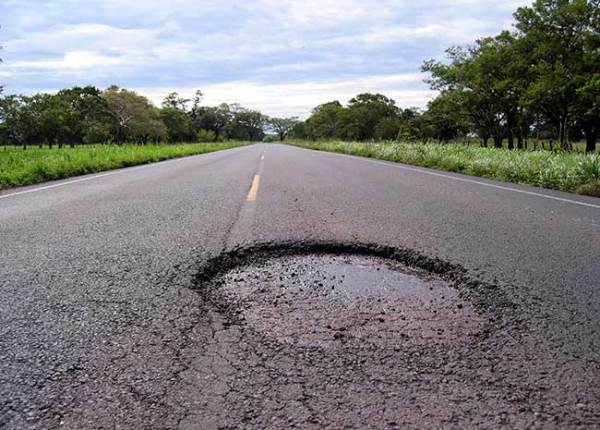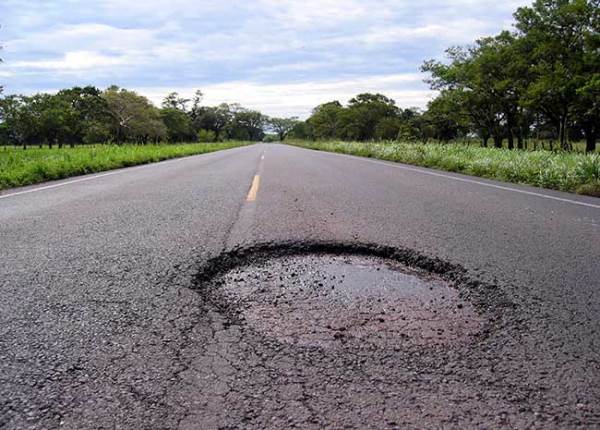The already decrepit condition of hundreds of local and regional roads and bridges across New South Wales is primed to become far worse because of a lack of investment in renewal, bigger trucks and frozen federal funding, says a peak group of engineers and councils.
The NSW Roads and Transport Directorate, a partnership between the Institute of Public Works Engineering Australia (IPWEA) and Local Government NSW this week sounded the official alarm bell over the negative safety and economic consequences caused by the deterioration of crucial bitumen assets and bridges.
The respected group is cautioning that the existing $600 million a year renewal shortfall for regional will now be made far worse by the “flat-lining” of federal Federal Assistance Grants to councils, even with the Roads for Recovery program.
Councils and engineers say that successive funding freezes and cuts, compounded by constant cost shifting, has now produced a nightmare scenario of neglect that will extract a far higher cost in terms of accidents, maintenance, repairs and economic damage.
“This means accepting further decline in the condition of road and bridge infrastructure, with worsening road safety outcomes, negative impacts on business and the NSW and regional economies, increasing maintenance costs and litigation, and reduced ability to meet the extra demands of growth in population and provide for higher productivity vehicles,” the official communiqué from the Roads and Transport Directorate said.
A heavy concern for councils charged with the upkeep of regional roads is the proliferation in use of higher capacity ‘B-Double’ and other high capacity trucks on regional roads and bridges that were simply never engineered to cope with such loads.
The problem that councils now face is that the increasing use of such ‘big rigs’ comes at the same time the amount of money available for essential upgrades and repairs to cope with the trucks is sharply declining.
To arrest the looming infrastructure disaster, councils and engineers have issued a plea to the state and federal governments for an emergency rethink on how roads are funded in both the immediate and longer terms, including access to low interest debt facilities.
Access to affordable, longer term debt is seen as a prime weapon in breaking the wasteful financial cycle of ad hoc ‘break-fix’ expenditure to repair assets will simply keep falling apart.
Another major bone of contention is the use of the politically popular but financially deleterious practice of rate-pegging that effectively forces council revenues backwards as costs increase.
“The NSW government should immediately direct IPART [the NSW Independent Pricing and Regulatory Tribunal] to increase the rate pegging limit by a further 2.5 per cent (total 4.8 per cent ) for the 2014/15 financial year to account for the decreased Financial Assistance Grants (FAG) announced in the May, 2014 Federal Budget and the real cost of construction increases,” the Directorate’s communiqué says.
In the longer term, councils want rate pegging dumped altogether so that local governments can determine appropriate rating increases in conjunction with their own communities using the Integrated Planning and Reporting framework.
“Failing that, the NSW Government should set rate pegging to take account of the real costs of undertaking construction and service provision to the community,” the Directorate said.
President of Local Government NSW, Keith Rhoades, said councils in his state now faced a four-year projected shortfall of $287.7 million because of Canberra’s move to stop increases Financial Assistance Grants.
“The freeze on these vital grants will have a significant impact on the lives of everyday Australians who are used to, and expect, quality services, roads and facilities from their local councils,” Mr Rhoades said.
“Unfortunately the communities hardest hit will be those in rural and regional council areas, which rely more heavily on Financial Assistance Grants due to their small rate bases and extensive road networks.
“Councils are responsible for 90 per cent of NSW’s roads by length and it’s essential that every kilometre of our transport network is in a satisfactory condition, as the nation heavily relies on our road infrastructure to move goods, produce and people.”






Leave a Reply